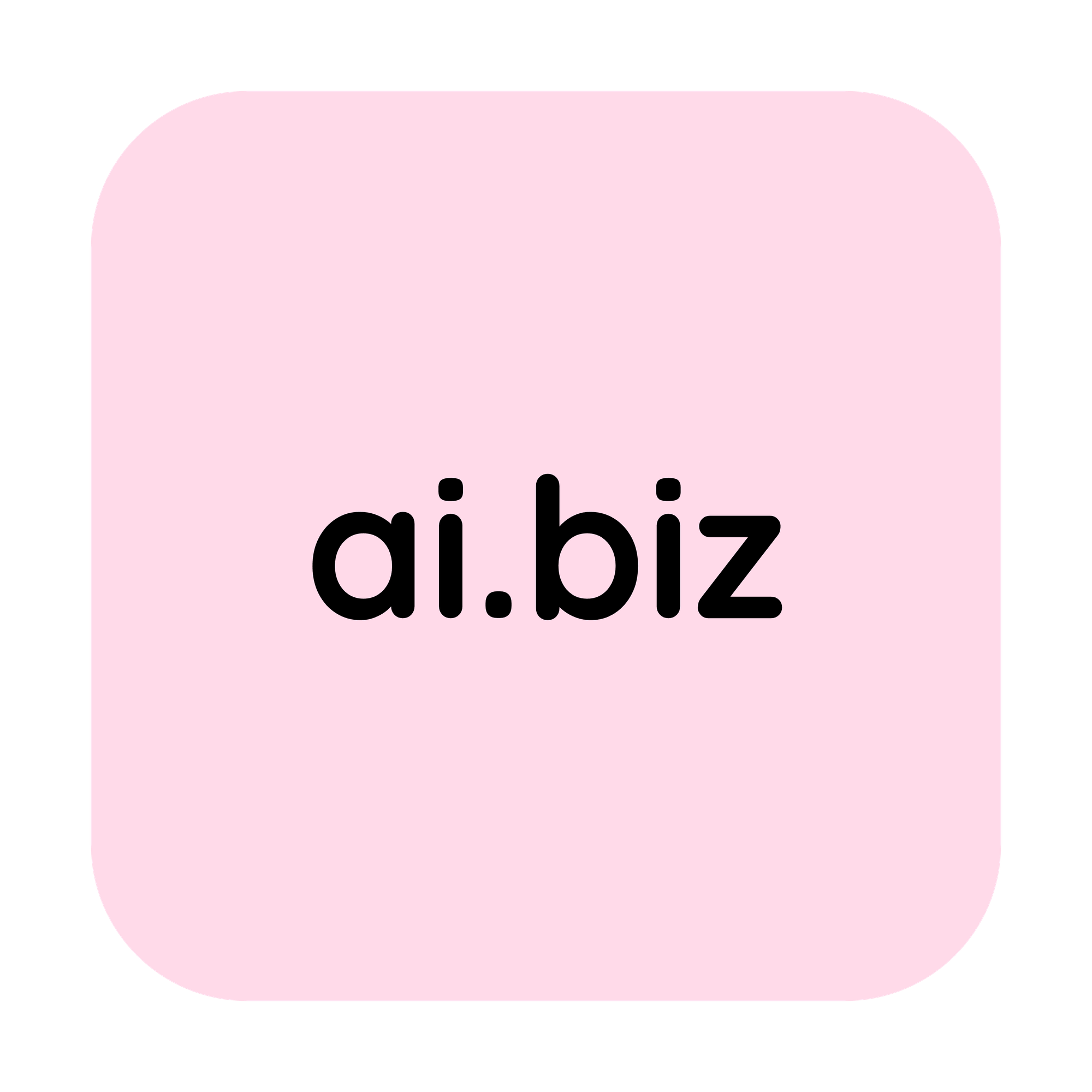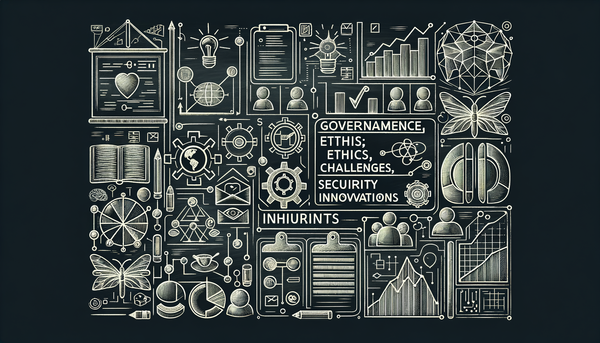AI News Podcast Update: Navigating the AI Landscape
AI is reshaping everything from spirituality to education, raising deep questions about creativity, ethics, and sustainability. With voices from the Vatican to Silicon Valley and creative studios to data centers, the landscape of artificial intelligence is both dazzling and daunting.
Spiritual Cautions and Parental Challenges in the AI Era
The conversation around AI is not confined to tech boardrooms or academic lectures—it has reached even the hallowed halls of faith. When Pope Leo voices concerns about AI posing a threat to humanity in a recent Wall Street Journal article, it signaled a broader debate on the ethical and existential risks of rapidly evolving technology. This stance complements other voices in the field who caution that technological progress can inadvertently sideline the subtle nuances of human connection.
Another recent update comes from Sam Altman, CEO of OpenAI, who discussed the implications of AI’s Advanced Voice mode during a podcast episode covered by TechRadar. Altman’s offhand remark, “My kids will never be smarter than AI,” sparked widespread debate, particularly among parents. While he expressed confidence that future generations would master these innovations, he also warned of potential "parasocial relationships"—a situation where children might develop emotional bonds with AI rather than with human peers. Such interactions, underpinned by cutting-edge voice technologies, blur traditional familial and community attachments, challenging educators and guardians alike to maintain a balance between digital adoption and personal connection.
"The real existential challenge is to live up to your fullest potential, along with living up to your intense sense of responsibility and to be honest to yourself about what you want." – Fei-Fei Li
This mix of cautionary notes—from the spiritual realm and parental concerns alike—suggests that while AI offers amazing possibilities, its integration into society must be carefully governed. Balancing state-of-the-art technology with human values is key to ensuring that digital advancements enhance, rather than diminish, genuine interpersonal bonds.
Legal Battles, Copyright, and the Ethics of AI-Created Content
The creative and corporate worlds are currently entangled in a battle to define the boundaries of AI's creative output. A high-profile lawsuit between Disney and Comcast, reported by Bloomberg, brings to the fore a fundamental question: Who owns the art generated by artificial intelligence?
This lawsuit is about more than legal technicalities; it raises significant ethical questions about intellectual property. AI systems are now capable of producing creative work—music, art, scripts—and this blurs the traditional lines that have long separated human creativity from machine output. As AI continues to evolve, there is growing concern over the authenticity of these creations and the potential for the dilution of human artistic expression.
Adding another layer to the discussion, Midjourney has ventured into the exhilarating realm of video generation, as detailed by Engadget. The transition from still images to dynamic videos not only illustrates technological prowess but also intensifies the debate around copyright infringement, as earlier legal issues with Disney and NBCUniversal underscore.
The situation calls for a reevaluation of current copyright laws, ensuring that while technology pushes forward, the rights and contributions of human creators remain respected. Navigating these murky waters requires a balanced approach where innovation does not come at the expense of established creative rights.
Economic Impact and the Future of Work in an AI-Driven World
The rapid deployment of AI technologies is reshaping job markets and business strategies alike. Headlines such as Amazon CEO’s recent assertion that AI will lead to a smaller workforce indicate a future where automation and machine intelligence significantly disrupt traditional employment models. Though the detailed summary from the WSJ report wasn’t detailed further, the potential impact is palpable. The concern is not limited to job losses but extends to a redefinition of roles as machines take over routine tasks and leave humans with more complex, uniquely creative challenges.
In parallel, the marketing landscape is witnessing a revolution thanks to AI. Ariel Kelman, Salesforce’s president and CMO, discussed how AI-driven marketing agents are enabling brands to forge deeper connections with consumers through hyper-personalized interactions. In a fast-evolving scenario where big data meets human-centered design, the effective use of AI tools in marketing can drive both efficiency and deeper emotional engagement. As noted in Business Insider, this dual approach of automation paired with authenticity could spell a new era for brand storytelling and customer loyalty.
These shifts in workforce dynamics are accompanied by broader economic implications. As companies recalibrate their business models and invest heavily in AI, there is a pressing need to upskill workers and create transition strategies for those whose roles are being automated. This evolution underlines the essence of balancing technological progress with social responsibility—ensuring that while companies harness AI for competitive advantage, they also invest in human capital for a sustainable future.
Energy Consumption, Sustainability, and the Hardware Behind AI
Behind the increasingly sophisticated algorithms lies a critical concern many overlook—the towering energy demands of modern AI hardware. According to a detailed Quartz analysis, the new generation of AI chips consumes nearly six times more electricity than older models. Data centers, already responsible for 4% of the U.S. electrical grid’s consumption, now face even steeper power usage demands.
Data center operators are actively seeking innovative methods to counteract these challenges. Traditional cooling techniques are giving way to revolutionary solutions such as liquid or immersion cooling, each with their own set of complexities and potential resource constraints. Even small improvements in power usage effectiveness (PUE) can translate into significant cost savings, as evidenced by initiatives from providers like Flexential and technological strides from semiconductor leaders like AMD.
These energy efficiency challenges remind us of the broader issue of sustainability in the tech sector. As AI continues its relentless march forward, developers and data center managers must work in tandem to ensure that our drive for computational power does not come at an unsustainable environmental cost. Balancing progress with sustainability is not merely a technical challenge but a global imperative.
Enhancing Education Through AI: Tools, Time, and Training
Artificial intelligence is transforming the landscape of education, offering unprecedented opportunities to personalize learning and streamline administrative processes. However, a crucial factor in realizing these benefits lies in properly equipping educators with the right resources and training. As reported by Forbes, many teachers feel unprepared to fully integrate AI tools into their classrooms.
The promise of AI in education is immense. Advanced analytics can provide insights into student performance, adaptive learning systems can tailor educational content to meet individual needs, and automation can take over monotonous administrative tasks—freeing teachers to focus on more meaningful student interactions. However, these benefits can only be realized if schools address the dual challenges of accessibility and training.
In many educational settings, the disparity in technological resources between schools further complicates AI’s integration. Adequate professional development and dedicated time for teachers to learn new systems are essential to prevent these advanced tools from becoming yet another burden. When implemented thoughtfully, AI's integration into education can significantly improve outcomes, serving as a powerful ally in nurturing the next generation of learners.
AI and the Creative Arts: From Static Images to Living Narratives
A particularly fascinating development in the AI ecosystem is its transformative impact on creative storytelling. Midjourney, already renowned for its stunning AI-generated imagery, has now unveiled its V1 Video Model, adding a dynamic layer to digital art. As detailed by Engadget, this tool allows users to animate their creations, turning static images into brief, captivating video clips. The move positions Midjourney alongside tech giants like Google and Adobe, all vying to revolutionize content creation with AI.
Yet, with these technological leaps come renewed debates over intellectual property and ethical usage. The journey of Midjourney reminds us that innovation in AI is invariably intertwined with legal and ethical challenges—a recurring theme as seen in the ongoing disputes involving Disney. Users are encouraged to explore these creative tools responsibly, an approach underscored by the need to balance technological marvels with respect for creative rights.
In the realm of cinema, director Qiu Sheng’s film "My Father’s Son," as showcased by The Hollywood Reporter, exemplifies how technology and storytelling can merge to explore deeply personal themes such as grief and legacy. By integrating elements like a VR boxing simulator and AI constructs into his narrative, Qiu Sheng challenges audiences to rethink how memory and loss can be processed and preserved, showcasing that even our most vulnerable emotions can find expression through innovative mediums.
Bridging Technology and Humanity: A Look at Life’s Big Questions
The sweeping advancements in AI are not solely about technological breakthroughs—they are emblematic of a fundamental shift in how we understand human potential and responsibility. Across various sectors, from marketing transformed by AI agents to data centers reinventing energy consumption practices, the overarching challenge remains consistent: harnessing the power of AI while preserving the intrinsic values of creativity, empathy, and sustainability.
It is a landscape where diverse narratives converge. The cautious reflections of religious leaders, the pragmatic concerns of educators and data center operators, and the revolutionary strides in creative arts together illustrate a multidimensional view of technology. As one might ponder the words of HAL 9000 in 2001: A Space Odyssey—"I'm sorry, Dave. I'm afraid I can't do that."—we are reminded that there are limits and responsibilities inherent even within our most advanced machines. Such quotes encapsulate the bittersweet blend of wonder and caution that defines our current era.
Moreover, initiatives across industries stress that no matter how far technology advances, the human touch remains indispensable. Marketers continue to stress authentic engagement, and educators fight for the time and resources necessary to master these new systems. It is a time when progress and prudence must walk hand in hand, guiding us through an era rich with both promise and profound questions.
Further Readings and Cross-References
- AI Updates: Innovation, Regulation, and Insights
- Multi-Faceted Impact of Artificial Intelligence
- Navigating the Transformative Landscape of AI
- Latest Developments in AI
Final Reflections
AI is more than just a technological tool—it is a mirror reflecting our hopes and anxieties. As innovations continue to weave into the fabric of everyday life, it becomes increasingly important to approach this revolution with both ambition and caution. The debate is not merely about what machines can do, but about how we choose to live in an era where every advancement intertwines with the essence of our humanity.
In the grand tapestry of progress, the blend of creative risk and ethical stewardship will ultimately determine whether the digital revolution becomes an empowering force or yet another challenge for society to overcome.




